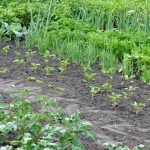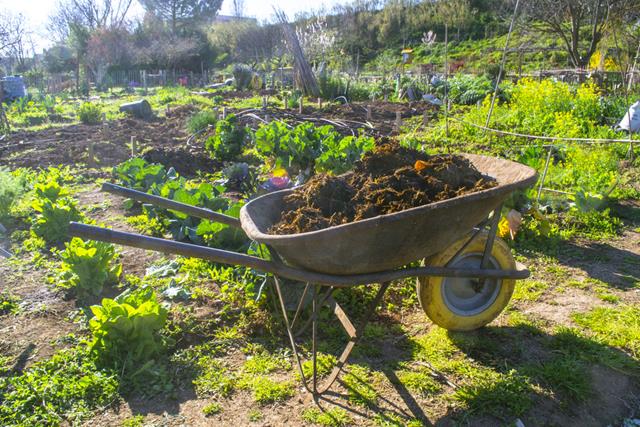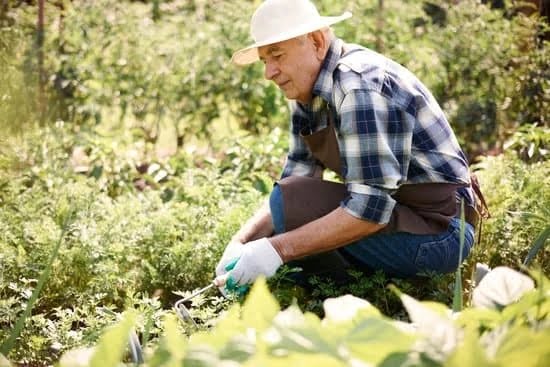Are you interested in learning about vegetable gardening techniques? Whether you’re a beginner or an experienced gardener, this article will provide you with essential information to help you grow a successful vegetable garden. From choosing the right location to advanced techniques, we’ll cover everything you need to know to produce a bountiful harvest.
Vegetable gardening techniques involve a combination of skills and knowledge that can help you cultivate healthy and productive plants. In this section, we’ll introduce you to the basics of vegetable gardening, including tips on choosing the best location for your garden, preparing the soil, selecting suitable vegetables, planting and caring for seeds, watering and fertilizing your garden, managing pests and diseases, harvesting, and preservation methods.
Before getting started with your vegetable garden, it’s important to understand the fundamental principles that will contribute to your success. By following these guidelines and implementing proven techniques, you can create a flourishing vegetable garden that provides delicious homegrown produce for you and your family. Let’s explore the foundational aspects of vegetable gardening to ensure a rewarding experience.
Choosing the Right Location for Your Vegetable Garden
When it comes to vegetable gardening techniques, choosing the right location for your garden is crucial for the success of your plants. The ideal location for a vegetable garden should receive at least 6 hours of sunlight per day, have good drainage, and be close to a water source. It’s also important to consider the proximity to your home for easy access and monitoring.
In addition, you’ll want to assess the soil quality in the potential locations for your vegetable garden. Conduct a soil test to determine its pH level and nutrient content. Most vegetables prefer slightly acidic soil with a pH range of 6.0-7.0. If necessary, you can amend the soil by adding organic matter or fertilizers to improve its quality.
Another factor to consider when choosing a location for your vegetable garden is protection from strong winds and natural barriers that may affect plant growth. If possible, position your garden near a natural windbreak such as trees or shrubs, or create a barrier such as a fence or trellis to shield your plants from strong winds.
By carefully selecting the right location for your vegetable garden and considering these important factors, you can set the stage for a successful harvest and healthy plants.
| Vegetable Garden Location | Considerations |
|---|---|
| Sunlight Exposure | At least 6 hours of sunlight per day. |
| Soil Quality | Conduct a soil test, amend soil if necessary. |
| Protection from Winds | Natural barriers or man-made structures to protect plants. |
Preparing the Soil for Successful Vegetable Gardening
Testing and Amending the Soil
Before you start planting your vegetable garden, it’s important to test the soil to determine its pH level and nutrient content. You can purchase a DIY soil test kit or send a sample to a local agricultural extension service for analysis. Once you know the condition of your soil, you can amend it as needed.
Adding organic matter such as compost, manure, or peat moss can improve soil structure and fertility. Additionally, you may need to adjust the pH level by adding lime to raise it or sulfur to lower it.
Tilling and Cultivating
Once you’ve amended the soil, it’s time to till and cultivate the area where you plan to plant your vegetable garden. Tilling helps break up compacted soil, improves drainage, and allows air and water to reach plant roots. Use a rototiller or a hand tool like a garden fork or hoe to loosen the soil to a depth of at least 12 inches. Be sure to remove any rocks, weeds, or debris as you work the soil.
Creating Raised Beds
Another popular technique for preparing the soil for successful vegetable gardening is creating raised beds. This involves building mounded rows of soil that are higher than the surrounding ground level. Raised beds offer better drainage, warmer soil temperatures in spring, and improved accessibility for planting and maintenance. They also provide better control over soil composition, making it easier to optimize growing conditions for your vegetables.
By following these techniques for preparing your soil, you’ll be well on your way to establishing a successful vegetable garden. With the right foundation in place, your plants will have the best chance of thriving and producing bountiful harvests throughout the growing season.
Selecting the Best Vegetables for Your Garden
When it comes to vegetable gardening techniques, selecting the right vegetables for your garden is a crucial step in ensuring a successful and bountiful harvest. There are numerous factors to consider when choosing which vegetables to plant, including the climate and soil conditions of your location, as well as your own personal preferences and dietary needs.
Consider Your Climate and Soil
Before selecting the vegetables for your garden, it’s important to take into consideration the climate and soil conditions of your location. Certain vegetables thrive in specific climates, so it’s essential to choose varieties that are well-suited to your region.
Additionally, some vegetables require specific soil pH levels and nutrient content for optimal growth. Conducting a soil test can help you determine the type of soil you have and what amendments may be needed to create an ideal growing environment for your chosen vegetables.
Assess Your Dietary Preferences and Needs
Another important factor to consider when selecting vegetables for your garden is your own dietary preferences and needs. Consider which vegetables you and your family enjoy eating the most, as well as any dietary restrictions or health considerations that may influence your choices.
If you’re new to vegetable gardening, start with easy-to-grow varieties that you commonly use in your cooking. As you gain more experience, you can experiment with different types of vegetables to expand your gardening repertoire.
Plan for Succession Planting
To maximize the productivity of your vegetable garden, consider incorporating succession planting into your gardening plan. Succession planting involves sowing crops at intervals throughout the growing season to ensure a continuous harvest. This technique allows you to make efficient use of space in the garden while extending the availability of fresh produce. When selecting vegetables for succession planting, choose crops with different maturity dates so that you can stagger their planting times accordingly.
By carefully considering these factors when selecting the best vegetables for your garden, you can set yourself up for a successful and rewarding vegetable gardening experience.
Planting and Caring for Vegetable Seeds
When it comes to vegetable gardening techniques, properly planting and caring for your vegetable seeds is essential for a successful garden. Follow these steps to ensure that your vegetable seeds have the best chance of thriving:
1. Choosing the right seeds: Select high-quality, organic vegetable seeds that are suited for your specific climate and growing conditions. Consider factors such as the length of your growing season, average temperatures, and sunlight levels.
2. Planting depth and spacing: Different vegetables require different planting depths and spacing. Refer to the seed packet or online resources for specific instructions on how deep to plant each type of seed and how far apart they should be spaced.
3. Watering and sunlight: After planting your vegetable seeds, ensure they receive adequate water and sunlight. Keep the soil consistently moist but not waterlogged, and provide at least 6-8 hours of sunlight per day for optimal growth.
4. Thinning seedlings: Once your vegetable seeds have sprouted, you may need to thin out the seedlings to prevent overcrowding. Follow the guidelines on the seed packet for proper spacing between plants, as overcrowding can lead to stunted growth and poor harvests.
By following these planting and caring techniques for vegetable seeds, you can set a strong foundation for a healthy and productive garden. With proper care from germination to maturity, your vegetable plants will reward you with an abundance of fresh produce throughout the growing season.
Watering and Fertilizing Your Vegetable Garden
Proper watering and fertilizing are essential components of successful vegetable gardening techniques. When it comes to watering your vegetable garden, it’s important to find the right balance. Over-watering can lead to root rot and other diseases, while under-watering can result in stunted growth and poor yields. The key is to water deeply but less frequently, allowing the soil to dry out slightly between watering sessions. This encourages deeper root growth and helps the plants withstand drought conditions.
In addition to proper watering, fertilizing your vegetable garden is crucial for healthy plant growth and abundant produce. Before planting, it’s important to amend the soil with organic matter such as compost or well-rotted manure to provide essential nutrients for the plants.
During the growing season, regular applications of a balanced fertilizer can help replenish the soil’s nutrients and support vigorous growth. It’s important to follow the fertilizer manufacturer’s instructions and avoid over-fertilization, which can lead to excessive foliage at the expense of fruit production.
Another important aspect of fertilizing your vegetable garden is understanding each plant’s specific needs. Some vegetables may require higher levels of certain nutrients, such as nitrogen for leafy greens or potassium for fruiting crops. By being attentive to these specific requirements, you can ensure that each type of vegetable receives the appropriate nutrients for optimal growth and productivity.
Overall, implementing proper watering and fertilizing techniques in your vegetable garden is vital for maintaining healthy, thriving plants that will reward you with a bountiful harvest. By understanding the specific needs of your vegetables and providing them with the necessary care, you can set yourself up for a successful growing season while minimizing issues related to nutrient deficiencies or water stress.
Managing Pests and Diseases in Your Vegetable Garden
Pests and diseases can wreak havoc on your vegetable garden if not managed properly. Implementing effective pest and disease management techniques is crucial to maintaining a thriving garden. There are various natural and chemical methods that can be used to control and prevent the spread of pests and diseases in your vegetable garden.
One of the most important steps in managing pests and diseases is to regularly inspect your plants for any signs of infestation or illness. Look for damaged leaves, holes, discoloration, or any abnormal growth patterns. Early detection is key to preventing the spread of pests and diseases throughout your garden.
Another essential technique for managing pests and diseases in your vegetable garden is crop rotation. By rotating where you plant certain vegetables each season, you can help prevent the buildup of soil-borne pests and diseases. This simple practice can also improve soil fertility, leading to healthier plants.
Utilizing natural predators such as ladybugs, beneficial nematodes, or praying mantises can also be an effective way to control common garden pests without the use of chemicals. Additionally, using organic insecticidal soaps or neem oil can help manage unwanted insects while minimizing harm to beneficial insects and wildlife in your garden. By incorporating these vegetable gardening techniques into your routine pest and disease management plan, you can maintain a healthy and productive edible garden.
Harvesting and Preserving Your Vegetable Garden Produce
Once your vegetables are ready for harvesting, it’s important to do so at the right time to ensure that they are at their peak of flavor and nutrition. Different vegetables have different harvesting times, and it’s crucial to familiarize yourself with each type of vegetable in your garden.
For example, leafy greens like lettuce and spinach should be harvested when the leaves are young and tender, while root vegetables like carrots and beets should be harvested when they have reached a good size.
After harvesting your vegetables, it’s important to properly preserve them to prolong their shelf life and prevent spoilage. One common method of preservation is canning, which involves sealing vegetables in jars after heating them to destroy microorganisms. Another popular method is freezing, which can be done by blanching the vegetables in boiling water before freezing them. This helps maintain their taste, texture, and nutritional value.
Additionally, some home gardeners choose to dry their vegetables for preservation. This method involves removing the moisture from the produce through air or heat. Herbs such as basil and parsley are commonly dried for future use in cooking. Regardless of the preservation method you choose, it’s essential to follow proper guidelines for safety and quality.
| Vegetable | Harvesting Time |
|---|---|
| Lettuce | Youthful stage with tender leaves |
| Carrots | When they have reached a good size |
| Basil | Before flowering occurs for best flavor |
Advanced Vegetable Gardening Techniques for Experienced Gardeners
In conclusion, mastering advanced vegetable gardening techniques can greatly enhance the productivity and success of your garden. By utilizing these methods, experienced gardeners can take their skills to the next level and cultivate a bountiful and thriving vegetable garden. Choosing the right location for your garden, preparing the soil effectively, selecting suitable vegetables, and implementing proper planting and care techniques are all essential components in achieving a successful vegetable garden.
Furthermore, watering and fertilizing your garden appropriately, managing pests and diseases effectively, and learning how to harvest and preserve your produce are crucial aspects of advanced vegetable gardening. These techniques require experience, knowledge, and dedication to ensure that your garden continues to flourish and deliver an abundant yield. By incorporating these advanced methods into your gardening routine, you can maximize the potential of your vegetable garden while also developing a deeper understanding of sustainable and efficient cultivation practices.
Frequently Asked Questions
What Is the Best Way to Layout a Vegetable Garden?
The best way to layout a vegetable garden is to consider the needs of the vegetables you want to grow. Take into account their sun and shade requirements, as well as spacing and compatibility with other plants.
What Are 5 Things You Should Do to Prepare a Good Veggie Garden?
To prepare a good veggie garden, start by testing your soil to determine its pH levels and nutrient content. Then, choose the right location with plenty of sunlight. Next, plan out your garden layout and properly space out your plants. Finally, make sure to regularly maintain and care for your garden by watering, weeding, and fertilizing as needed.
What Is the Most Efficient Way to Grow Vegetables?
The most efficient way to grow vegetables is through companion planting and crop rotation. Companion planting involves growing compatible plants together to deter pests, enhance flavor or repel insects naturally.
Crop rotation helps prevent soil depletion and controls pests by rotating crops in different areas each year. Both methods are sustainable and environmentally friendly ways to maximize vegetable growth in a garden setting.

If you’re looking to get into vegetable gardening, or are just looking for some tips on how to make your current garden better, then you’ve come to the right place! My name is Ethel and I have been gardening for years. In this blog, I’m going to share with you some of my best tips on how to create a successful vegetable garden.





